One day in 1972, a young man was lying in a dark hole thinking about how to commit suicide.
As long as you die, you can be freed from this dark prison . Or at least break a leg? Can you get lung disease by sucking more dust in the hole? In that case, I can leave here logically…
However, he was not imprisoned here by anyone. He lived in the cave completely voluntarily, just to complete a scientific experiment on “time” .

Why do scientists choose to live underground? | M. Siffre
isolated from time
The man who locked himself in the cave was Michel Siffre, a French scientist who was 33 at the time.
Silver was originally a geologist, but now his research object is not a rock, but himself in a cave. The subject of the experiment was to observe how the body’s “intrinsic clock” works .
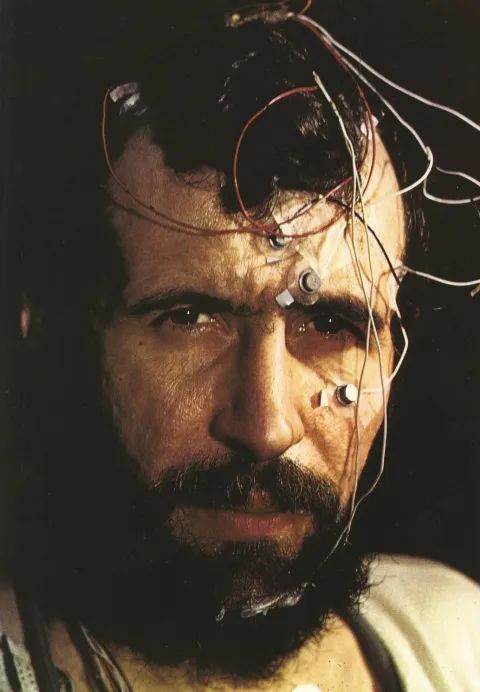
Investigator Michel Siffre | M. Siffre with monitoring electrodes attached
Usually, under the influence of external light and clock, people live a regular life with a cycle of 24 hours. However, what would happen if all external clues to “time” disappeared? Will the human body still know when to wake up and when to sleep? Silver lived in a sunless cave, away from clocks and calendars, to find out exactly that.
Similar experiments have been conducted several times, and Silver himself has participated for the second time— but this time, he has challenged the longest isolation period ever . The formal experimental period was as long as 6 months, and with some follow-up observations, Sever lived in the dark underground for a total of 205 days.
deep underground
On February 14, 1972, Silver entered the “Midnight cave” in Texas, USA, and began a long underground life.
There is “absolute darkness, complete silence” and the light bulb is the only light source in the cave. Silver reckons his days by sleeping and waking cycles, and the concept of time disappears from his life completely . His only contact with the outside world was a telephone line that connected to the support team on the ground.
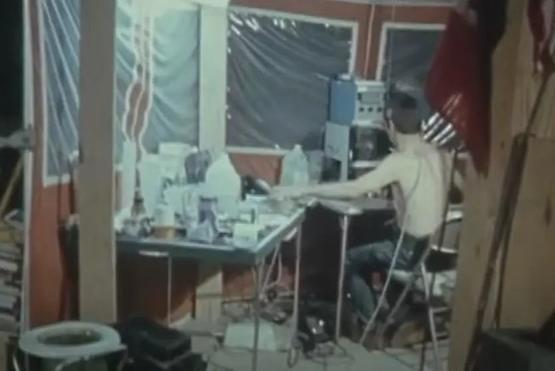
Experiment Station in the Cave | Midnight Cave: The Time Experiment/National Speleological Society
Every day in the cave is quite busy. Silver spends hours taking tedious daily measurements and reporting himself over the phone . He recorded blood pressure and body temperature, monitored ECG and EEG signals, tested vision changes with an air gun, and completed a series of cognitive tests. He froze urine samples in the freezer and shaved beard stubble into numbered envelopes—materials that would then be sent to a lab to analyze changes in hormone levels.
He lives in nylon tents and survives on frozen food. In his spare time, he writes a diary, reads a book, or listens to music to pass the time. At first, everything seemed to be going well— at this point, Silver had no idea what abyss he was about to fall into over the next few months .
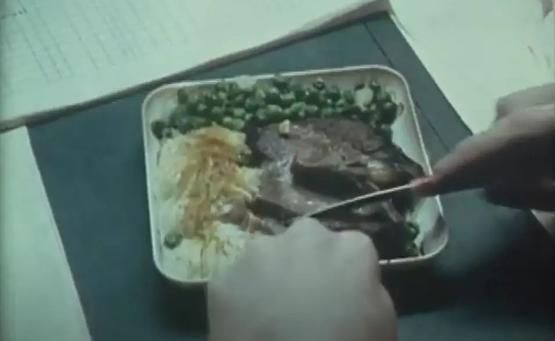
The frozen pre-made meal Siffre ate in the cave was the same as the Apollo astronauts, courtesy of NASA | Midnight Cave: The Time Experiment/National Speleological Society
mental breakdown
As time passed, the repetitive routine became more and more boring, and loneliness gradually eroded Sever’s heart . His precious pastimes were devastated: the gramophone that played music broke after just a month, and books and magazines were rapidly growing mold in the damp cave.
“I am going through the lowest point of my life,” he wrote in his diary . His vision was gradually declining, his memory was getting dimmer, and his brain could hardly organize any clear thoughts.

Siffre reading in a cave – however, books did not save his crumbling spirit | M. Siffre
Why waste your life on this damn experiment? Silver suddenly fell into serious self-doubt . He tore off the monitoring electrodes attached to his body and yelled at his colleague on the other end of the phone, “I’ve had enough”—while the experiment wasn’t halfway there. He started thinking about how to kill himself and disguise the scene as an accident – so he could get out of it while retaining a bit of his dignity as a scientist.
Silver struggled with these crazy ideas for about 10 days. In the end, he calmed down, reattached the electrodes, and continued the experiment . He needs to be accountable to his research collaborators, as well as his family. The experiment had already run out of funds raised and overrun, and if he died, his family would be left in huge debts—a thought that gave Silver to suicidal thoughts.
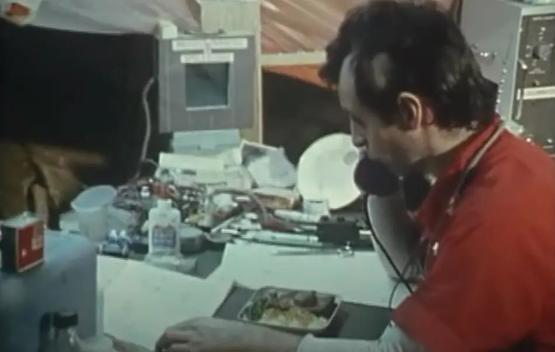
Siffre on the phone with the ground team | Midnight Cave: The Time Experiment/National Speleological Society
looking for companions
Silver continued to live alone in the cave – until one day, he found a mouse.
He was eager to get close to this little animal, because only it could be his companion . He named the mouse “Mus” and spent days watching its every move. He secretly figured out how to catch it and keep it as a pet.
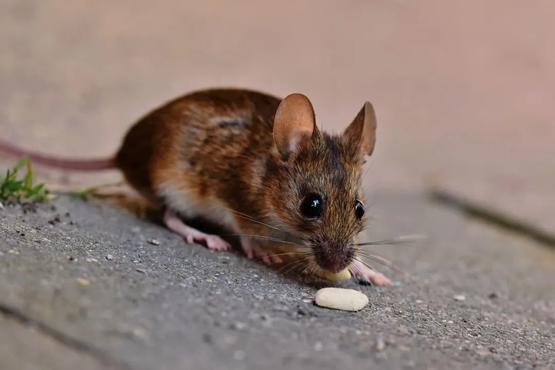
For the lonely, the nasty rat has become a precious companion | Ralphs_Fotos/pixabay
He smeared jam on the ground as bait and watched his new friend approach cautiously. When the rat finally let his guard down, Sever lifted a deep roasting pan and slammed it down. His heart was pounding with excitement—finally, he had company.
However, when he lifted the baking tray, Sever saw a heartbreaking scene – Mus died on the spot, lying motionless in the jam . Apparently, Silver lost his hand and accidentally killed the mouse with the rim of a heavy baking pan. “The whimper was gone, and it lay there, despair over me,” he wrote in his diary.
Fortunately, a few days later, Silver received a call from a colleague—the experiment was finally over.

Siffre | J.-P. Maison returning to the ground after the experiment
What did the experiment find?
The experiment yielded the observation Silver was looking for: During his long cave life, his “inner clock” changed subtly.
For the first five weeks of the experiment, he lived on a 26-hour cycle “a day” and gradually developed a jet lag with the outside world . This is in line with previous observations, in which scientists have found that human “inner cycles” are always slightly longer than 24 hours, and that there are individual differences. After that, Silver’s life rhythm took a more miraculous change: Sometimes, his sleep-wake cycle would suddenly stretch to 40-50 hours, without him noticing such a dramatic change .
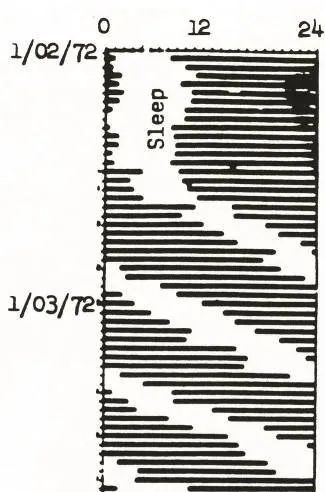
Siffre’s wake (black line) and sleep (blank) periods gradually staggered from outside time after the cave experiment began on February 14 | Siffre 1991
However, the more important discovery may be that this experiment vividly shows the harm of “social isolation” to human mental health. Now, more research has confirmed that long-term social isolation increases the risk of depression, suicide, impaired cognitive function, and makes people more susceptible to chronic diseases.
After leaving the burrow, Silver took months to recover from depression. He was left with $100,000 in debt due to severe overruns on the experiment and had to leave the field of chronobiology research.
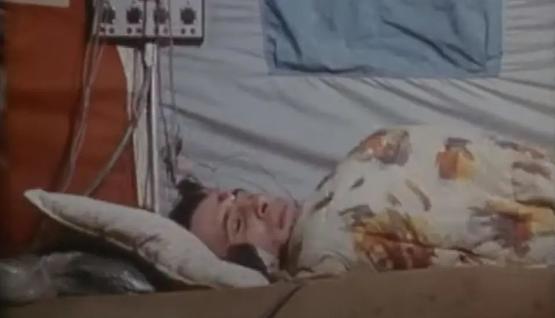
Siffre sleeping with monitoring electrodes in a cave | Midnight Cave: The Time Experiment/National Speleological Society
But even so, the scientist remained emotional about the cave experiment, and in late 1999 he took on a third challenge. At the time, he was 60 years old and wanted to see if increasing age had an effect on the “inner clock.”
Silver ushered in a new millennium in a cave of silence—but, cut off from time, he didn’t know exactly when that moment would come.
references
[1] Alan Burdick – Why Time Flies_ A Mostly Scientific Investigation-Simon & Schuster (2017)
[2] https://ift.tt/bWNZk1v
[3] https://ift.tt/cJgKi9N
[4] https://ift.tt/57mMwQN
[5] https://ift.tt/TlyPQxL
Author: Window Knocking Rain
Editor: Luna
Source of cover image: Figureworm Creative

more historical stories
This article is from Nutshell and may not be reproduced without authorization.
If necessary, please contact [email protected]

This article is reproduced from: http://www.guokr.com/article/461994/
This site is for inclusion only, and the copyright belongs to the original author.

